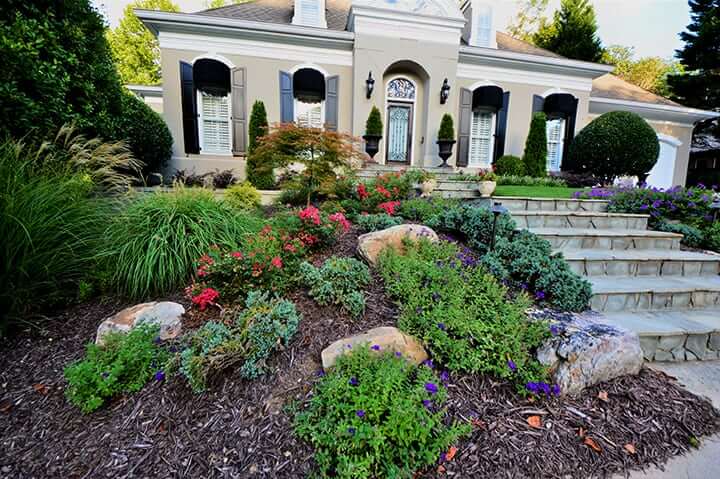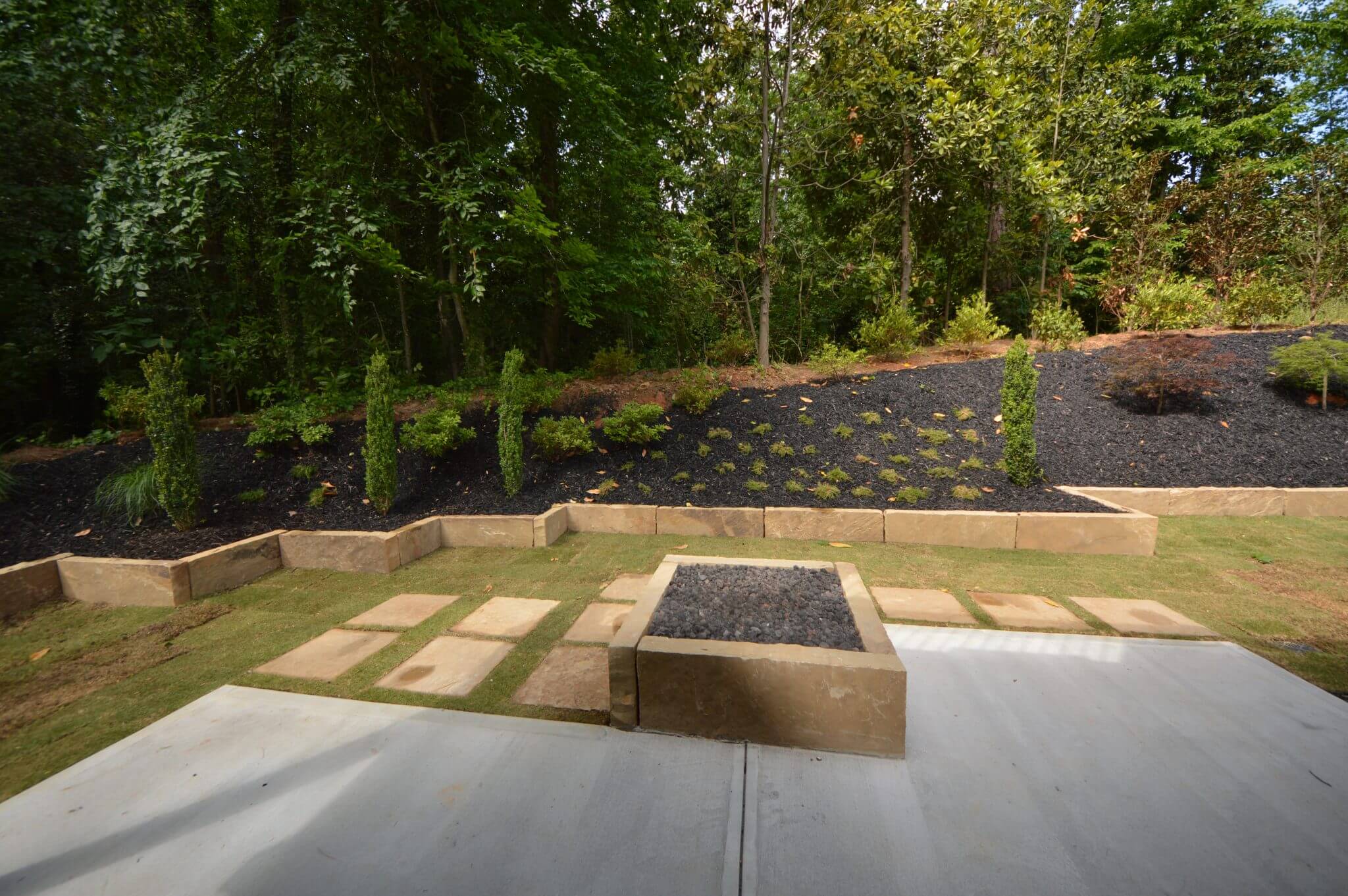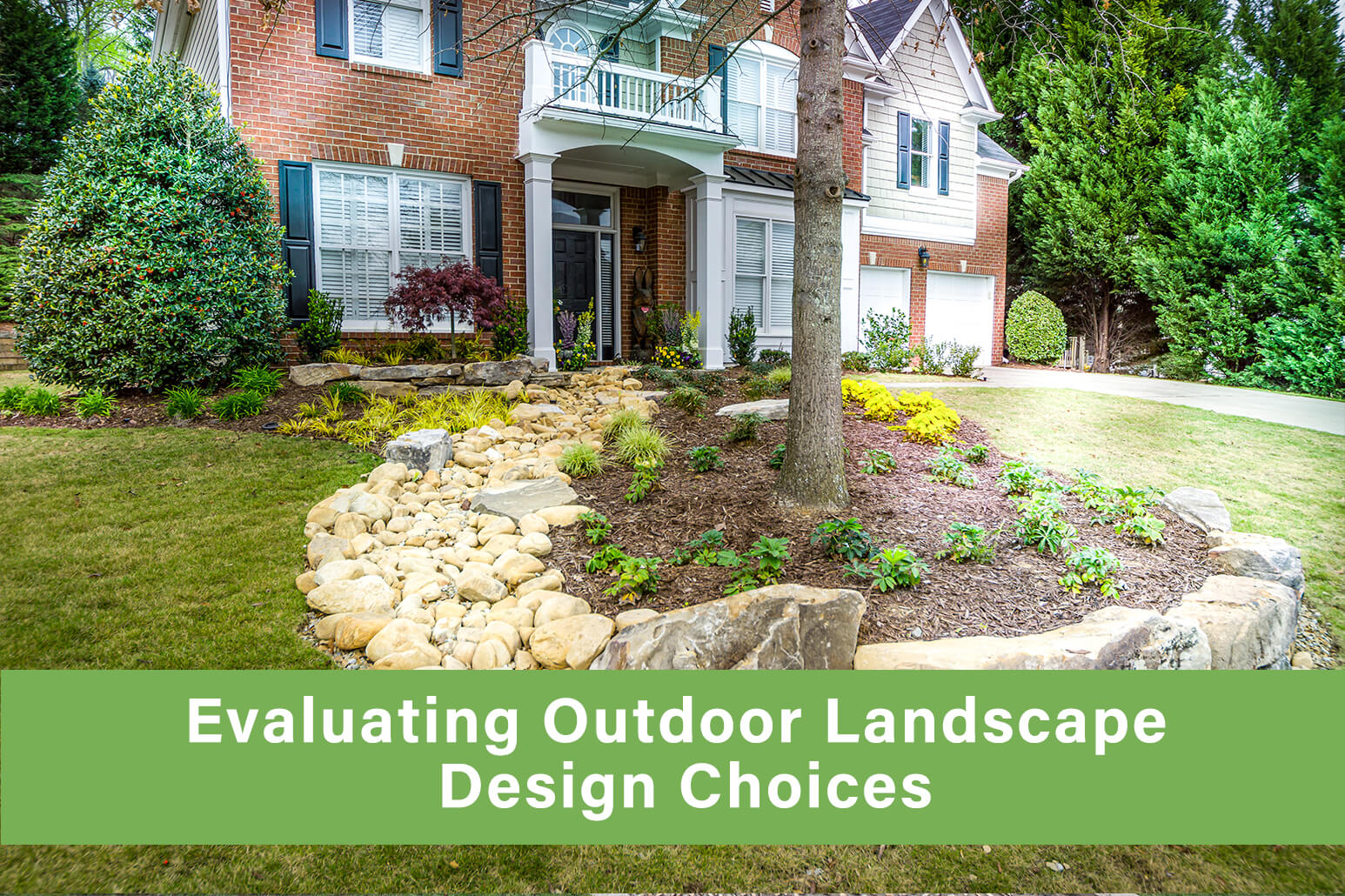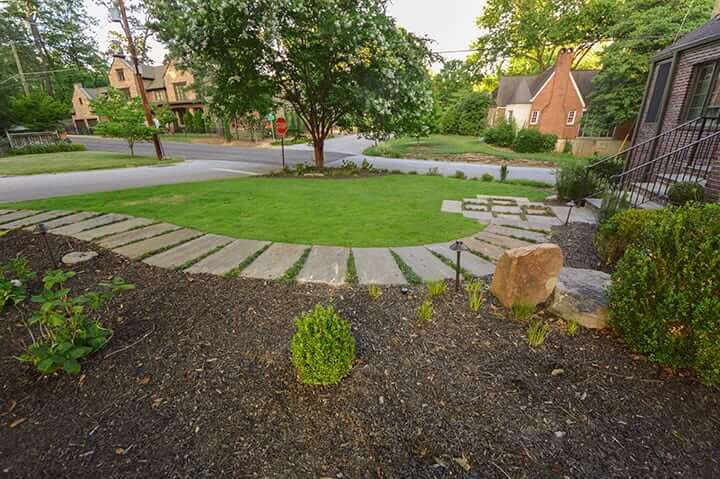No matter the type of design work you are considering, there is one thing that they all have in common: The need to plan and understand the space with which you are working. Whether it be a floorplan for your new home, a room makeover or an upgrade to your landscape, having a plan is essential to having a successful result. But, in order to create the plan, there are an assortment of factors that need to be considered. For those who have never embarked on the excitement of landscape design, then it can be a bit overwhelming. After all, just because your yard is the equivalent of a blank canvas, it doesn’t necessarily mean that you are ready to start adding color. So, before going to the nursery and selecting a plethora of plants and yard décor, it is important to have a well-crafted plan.
7 Tips for Determining Landscape Design Elements
- Lines: Understand how you can use the alignment of the plants to draw the eye where you want it to go. Vertical lines draw one’s eyes upward, while horizontal ones are great for bringing attention to small alcoves, garden areas, or paths or other focal points. In addition, keep in mind that curved lines tend to be more natural and calming while straight lines are more formal and direct.
- Balance: Endeavor to keep the size of garden areas, shrubbery, trees and outdoor structures in proportion to the house and space you are working with. A good rule of thumb is that the height of an element (be it shrubbery, a fence, or a fountain) should be 1/3 the height of the width of a space – so a patio area that is 24 ft2 is best paired with vertical element that is 8 feet tall.
- Lighting: There is a wide variety of lighting choices that can be used to set the atmosphere of your landscape, but also try to take advantage of natural lighting. For instance, planting trees and shrubs along an east-west line will often create a beautiful display at sunset/sunrise.
- Mix it up: Don’t be afraid to incorporate a wide range of plant types in the same space. It is totally acceptable to combine varieties of hostas with decorative grasses. Also, plant from big to small. Start by determining trees, any water features, statuary or structures to set the stage. Need help? Our Outdoor Makeover team is happy to help you determine what types of plants will work best in your landscape design.
- Harmony: Choose plants and design elements that suit the style of your home. It helps to determine the theme or feel of the finished product, then work to have the design be aesthetically and functionally placed.
- Harmony: Choose plants and design elements that suit the style of your home. It helps to determine the theme or feel of the finished product, then work to have the design be aesthetically and functionally placed.
- Focal point: For your landscape design to fully work, be sure to have a focal point. It might be a gazebo, a water feature, a large flowerbed or any other element but having a focal point helps set the theme.
- Simplicity: A busy landscape with numerous features is not only difficult to keep maintained, but it can be difficult to focus on or be able to relax in. By keeping the landscape simple it is easier to find pleasure and relaxation when outside. Designing a landscape that makes you happy without adding a long list of items to the To Do is important. Our team of landscape makeover specialists knows how to turn your landscape from blasé to beautiful. Give us a call to get started on your dream landscape.


 8 Outdoor Makeover Ideas for Your Landscape
8 Outdoor Makeover Ideas for Your Landscape Evaluating Outdoor Landscape Design Choices
Evaluating Outdoor Landscape Design Choices Landscaping Upgrades that Will Add Resale Value
Landscaping Upgrades that Will Add Resale Value
LET'S BE SOCIAL: